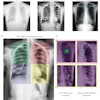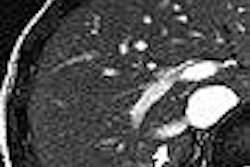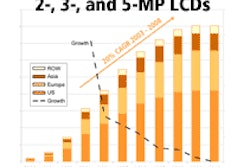Radiology may still be struggling in the turf wars, but there's one metaphorical battlefield where it's gaining ground -- bone densitometry. Researchers from Thomas Jefferson University in Philadelphia reported that, over a six-year period, radiologists edged out other specialists in meeting the growing demand for DEXA services.
"The total number of DEXA scans performed among Medicare patients rose ... a fourfold increase over six years, attributable to demographics, heightened public awareness of osteoporosis, and advances in therapy," wrote Dr. Charles Intenzo and colleagues (Journal of the American College of Radiology, August 2005, Vol. 2:8, pp. 662-664).
They mined Medicare databases from 1996 to 2002, showing all patients who underwent DEXA in various clinical settings. Physicians were classified as radiologists or nonradiologists, including orthopedists and gynecologists.
The group found that in 1996 a few more than 500,000 DEXA scans were performed, with 30% done by radiologists. By 2002 the number of scans had increased to 2.1 million, of which radiologists performed 45%.
In the time period analyzed, the total number of scans among Medicare patients increased by 338%. In line with that jump, the number of scans performed by radiologists increased by 553%, the authors stated.
Intenzo's group urged radiologists to maintain this upward trend by continuing to provide quality services. This includes a thorough understanding of densitometry interpretation and writing reports that are useful to referring physicians.
However, they acknowledged that their study could not address the issue of why nonradiologists seem willing to let DEXA scans go. One theory, they stated, is that the exam is not a huge moneymaker. Bone densitometry reimbursement rates are fairly low. They cited reimbursement rates for Pennsylvania at about $135 for the technical component (spine and hip), and a little over $16 for the professional component. Still, radiologists would be wise to keep on doing these exams, especially as the population ages and obesity remains a problem.
In other orthopedic research news, initial results from the Osteoporotic Fractures in Men (MrOS) Study indicated that, in the study cohort of 5,995 men, 17% reported a nontraumatic fracture after age 50. MrOS is a prospective study designed to examine the extent to which fracture risk in men is related to bone mass, bone geometry, and other factors (Contemporary Clinical Trials, August 3, 2005).
A second study, this time focusing on women, assessed the possible factors affecting bone mineral density in postmenopausal women. The Turkish investigators found that the two main factors were body mass index and time since menopause, both of which should be kept in mind when assessing women for osteoporosis and its related symptoms (Archives of Gynecology and Obstetrics, July 6, 2005, pp. 1-4).
By Shalmali Pal
AuntMinnie.com staff writer
September 12, 2005
Related Reading
Targeted exercise may reduce hip fragility, July 8, 2005
African Americans less likely to receive osteoporosis care, June 1, 2005
Interventional rads still lead in peripheral arterial interventions -- for now, January 6, 2005
Bone DEXA interpretation only as great as the sum of its parts, October 31, 2003
Copyright © 2005 AuntMinnie.com



















